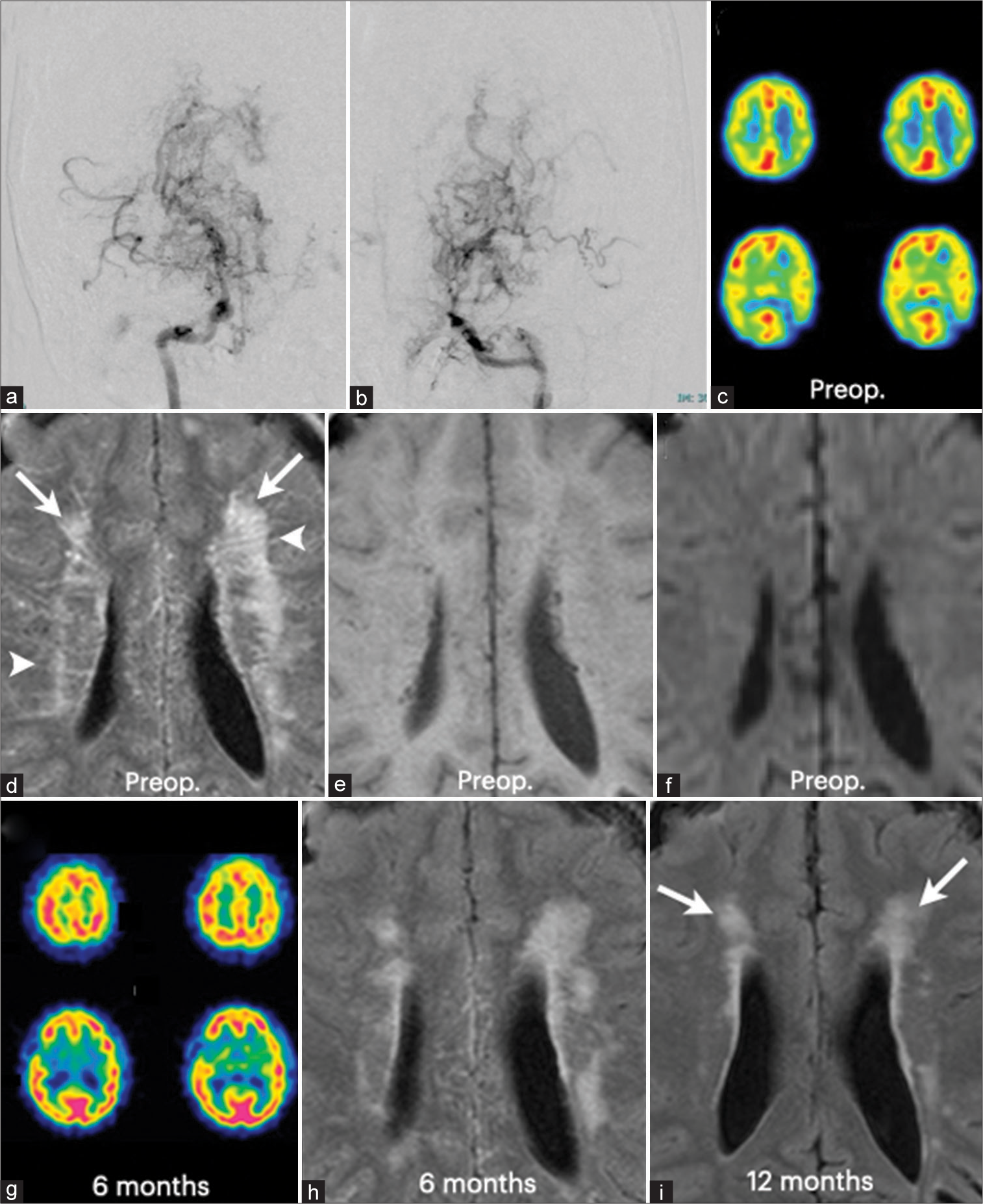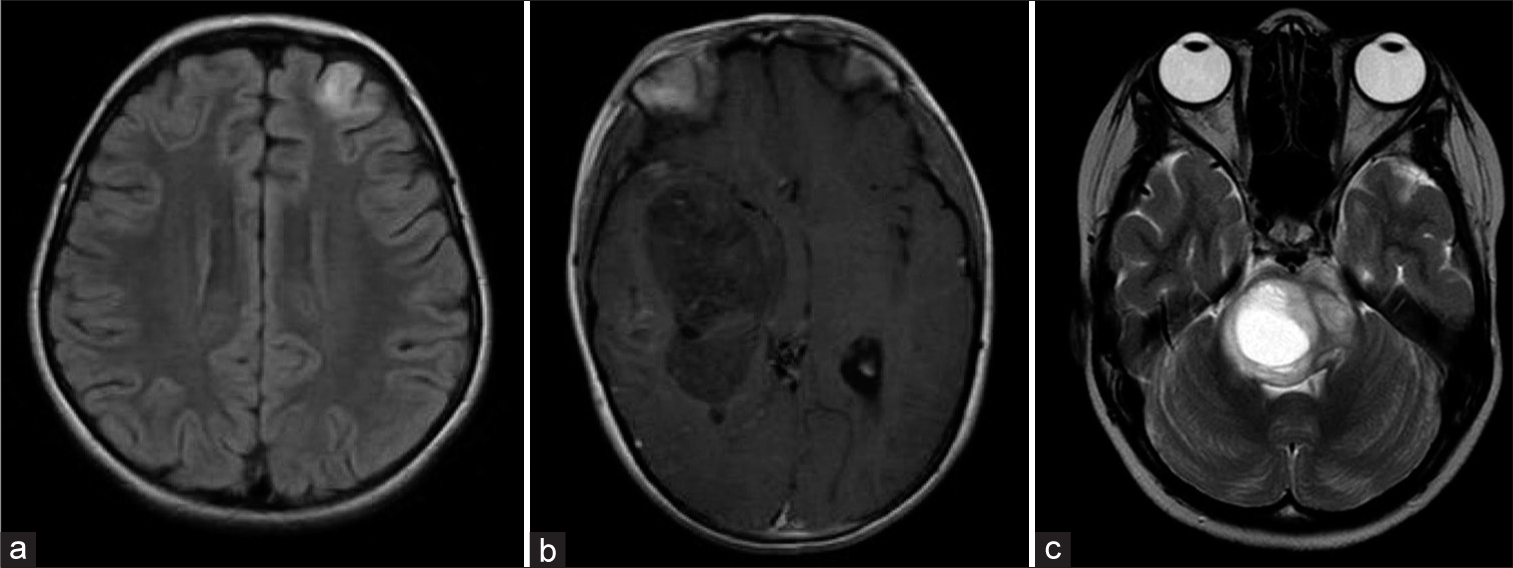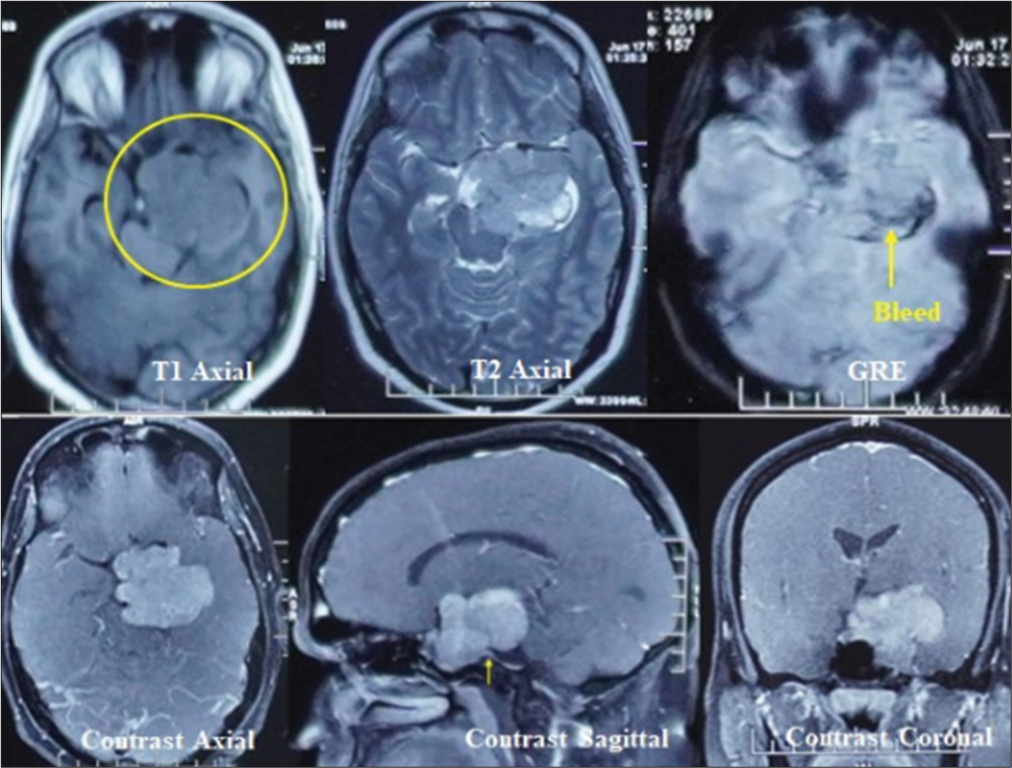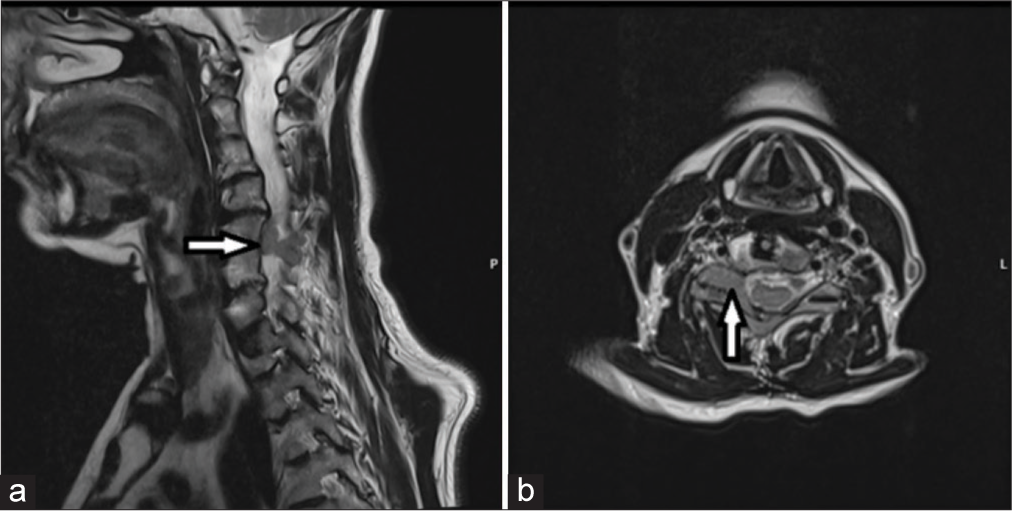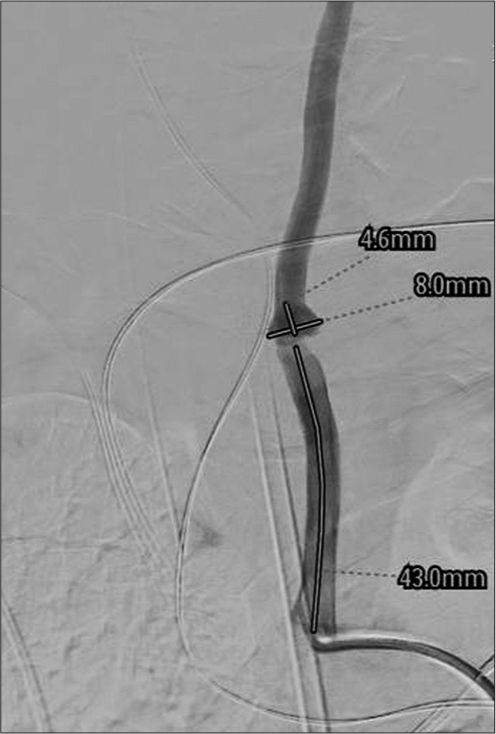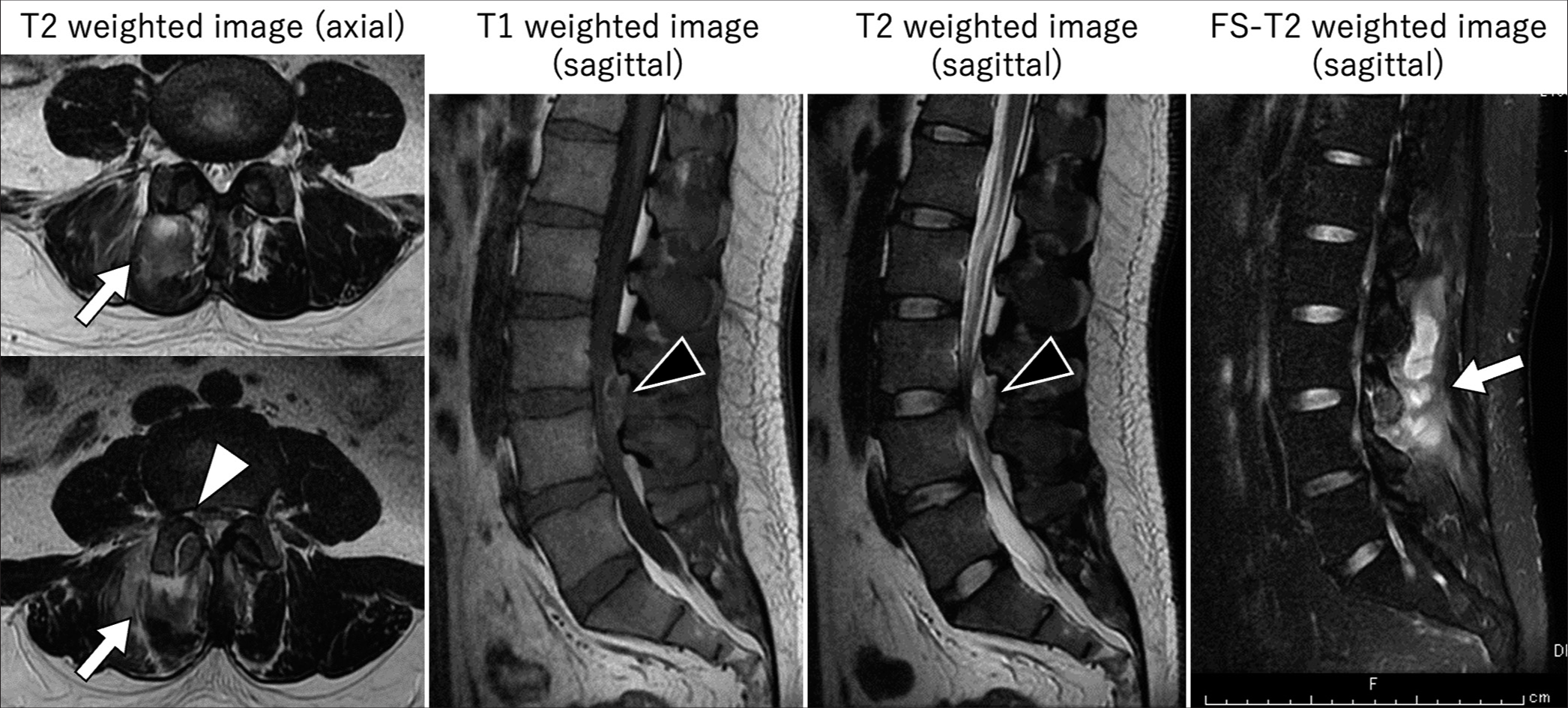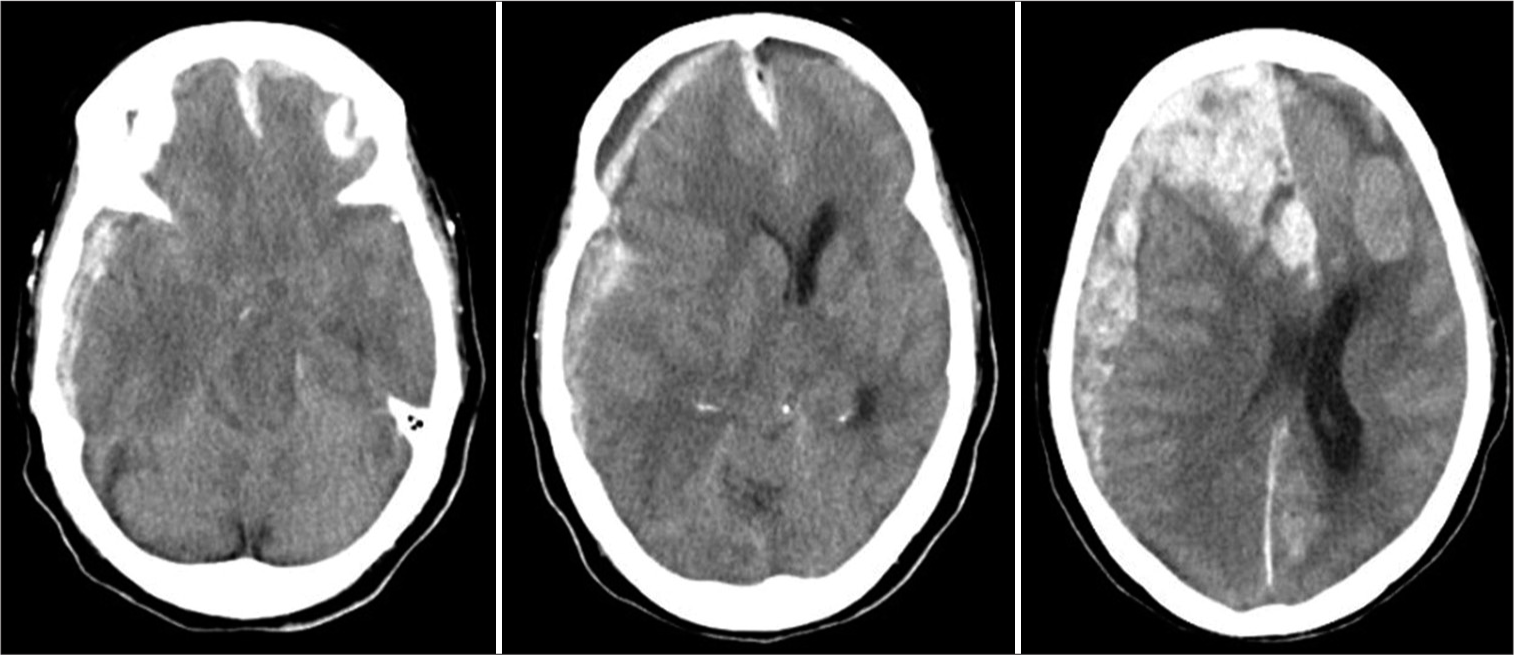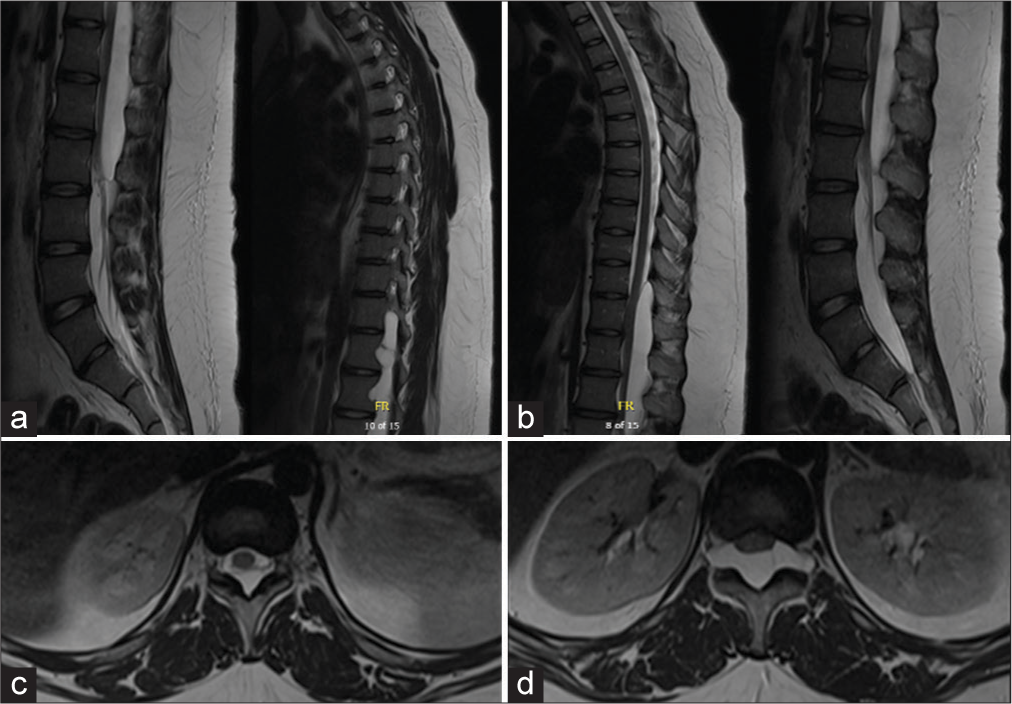Resolution of white matter hyperintensity after surgical revascularization in moyamoya disease – A report of three cases
Date of publication: 12-Apr-2024
Background: Moyamoya disease often presents white matter hyperintensity (WMH) lesions on fluid-attenuated inversion recovery (FLAIR) images, which is generally accepted as irreversible. We, herein, describe three cases of moyamoya disease with WMH lesions that regressed or disappeared after surgical revascularization.
New CNS tumor classification: The importance in pediatric neurosurgical practice
Date of publication: 12-Apr-2024
Background: The management of the central nervous system (CNS) tumors in the pediatric population is crucial in neurosurgical practice. The World Health Organization (WHO) has evolved its classification of CNS tumors from the 19th century to the 5th edition, published in 2021, incorporating molecular advancements. This transition from morphology to molecular characterization is ongoing.
Medically responsive amyloidogenic giant sellar-parasellar prolactinoma
Date of publication: 12-Apr-2024
Background: Giant prolactinomas are rare; among them, the amyloidogenic variant, prolactinomas with extensive spherical amyloid deposits, are rare, with only 30 cases reported with recommendations of surgical management contrary to the routine prolactinoma’s medical management.
A rare presentation of leiomyosarcoma metastasis to the cervical spine: A case report and a brief review
Date of publication: 12-Apr-2024
Background: Leiomyosarcoma (LMS) is a rare malignancy that originates from smooth muscle. The most common sites of metastases include the lungs, liver, kidney, and skin. Notably, metastases of LMS to the central nervous system/or spine are extremely rare. When a cervical spinal LMS lesion was encountered, the patient successfully underwent gross total tumor resection with negative margins.
Thrombectomy and stenting of pseudoaneurysm from transcarotid artery revascularization
Date of publication: 12-Apr-2024
Background: Transcarotid artery revascularization (TCAR) is becoming an increasingly popular treatment of carotid stenosis. Despite this rapid adoption, little in the literature describes the associated complications of this procedure.
Psoriasis vulgaris of the skin caused a L3-L4 lumbar epidural spinal abscess
Date of publication: 12-Apr-2024
Background: In a 31-year-old male, psoriasis vulgaris (PV) of the skin caused paraparesis attributed to a L3-L4 epidural spinal abscess that required emergent surgical decompression.
Fatal convexity and interhemispheric acute subdural hematoma from a falx meningioma: A case report
Date of publication: 05-Apr-2024
Background: Hemorrhagic meningiomas are rare. We report a rare case of nontraumatic convexity and interhemispheric acute subdural hematoma (ASDH) caused by a falx meningioma.
Adequate control of seizures in a case of lead migration and neuromodulation of the posterior Sylvian junction: A case report
Date of publication: 05-Apr-2024
Background: This report aims to describe the neuromodulation effect on seizure control in a patient with a left hippocampal migrated electrode to the Posterior Sylvian Junction (PSJ) during a follow-up of 17 years.
Extradural spinal cyst in a pediatric patient: A case report
Date of publication: 05-Apr-2024
Background: Spinal extradural arachnoid cysts comprise <1% of all spinal lesions and are rare findings in pediatric patients. The pathogenesis of spinal extradural arachnoid cysts is not well known but is thought to most commonly be due to congenital dural defects. Other origins include trauma, inflammation, or infection, such as arachnoiditis. Spinal magnetic resonance imaging is the gold standard for diagnosis, showing a fluid-filled space dorsal to the spinal cord with signal intensity akin to cerebrospinal fluid (CSF) and often the site of dural defect with CSF leak. While most spinal extradural arachnoid cysts are asymptomatic, large cysts can compress the spinal cord or nerve roots, leading to myelopathy, radiculopathy, or focal pain symptoms. In such cases, surgical management is indicated.
Surgical treatment of orbital tumors in a single center: Analysis and results
Date of publication: 05-Apr-2024
Background: Orbital tumors, arising within the bony orbit and its contents, present diverse challenges due to their varied origins and complex anatomical context. These tumors, classified as primary, secondary, or metastatic, are further subdivided into intraconal and extraconal based on their relationship with the muscle cone. This classification significantly influences surgical approach and management. This study highlights surgical experiences with orbital tumors, underscoring the importance of tailored surgical approaches based on the lesion’s site and its proximity to the optic nerve.


